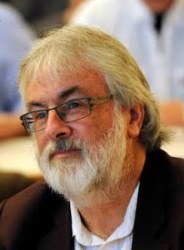Howard's End: Human Genome Map Not Enough
Howard's End: Human Genome Map Doesn’t Solve Mysteries
If you believe that each human being in the world is nothing more than a giant chemistry set then you'll likely fall for all the hype being generated about the human genome "book of life" discoveries. John Howard writes.
Scientists might think they've solved the great mystery of life with their latest description of what they've read in the genetic book of instructions. But it's pure chemistry and new drugs now seem to be touted as a cure-all for our present and future ills.
But how does a body actually know it's injured or diseased in the first place in order to start repair?
For example, if you cut your finger what drives your body to start repairing your finger and how does it know it's even been injured? Surely, it can't just be a chemical amino-acid reaction because that raises further questions.
Let's say you've just been conceived. There you are sitting in Mum's womb as a fertilised egg. Suddenly, cells start to divide and chromosomes split lengthwise to make two of each so that each daughter cell then had the same number of chromosomes. The obvious conclusion is that these chromosomes transmitted heredity and that each one could exchange smaller units of itself with its counterpart from the other parent.
Thomas Hunt Morgan won the Noble Prize for this work in 1933. But he seems to have relied on the 1880's work of Theodor Boveri at the University of Munich.
Where Morgan's work was important was that he postulated that the chromosomes and genes contained not only the inheritable characteristics but also the code for cell differentiation.
A muscle cell, for example, would be formed when the group of genes specifying muscles were in action. Therefore, in the early stages of the embryo, every gene on every chromosome is active and available to every cell.
Morgan said that genes are repressed until only one set remains ACTIVE in each cell. Not that only one remains in each cell. The entire genetic blueprint is still carried by every cell nucleus.
But genetic science has always said that cell differentiation is a one way street - that cells could never retrace their steps from a mature specialised state to a primitive unspecialised form despite the fact that chromosomes provided a plausible means for the reversal. But remember all cells of the adult still contain the full array of chromosomes even though most of them are repressed.
Doesn't it seem logical that what has simply been locked-up might also be unlocked when new cells are needed. That is the key we need to find not endless use of chemicals and drugs.
The chemistry mechanics greeted the discovery of genes and chromosomes with great joy. Here at last was "proof" that life worked in a nice, simple, mechanical way and our ills will now be solved by a cocktail of manufactured chemicals.
So perhaps the genetic scientists can answer one question for me. If a salamander, the evolutionary prototype of all land vertebrates, can grow a new limb, a new tail, a lens for its eye, or a new jaw - why can't humans?
All the interrelated parts of the salamander grow back together at precisely the right time - the new bones and muscles along with the proper nerve and blood vessel connections.
How does all the information about the missing parts get to the undifferentiated cells telling them what to become, which genes to activate, what proteins to make, where to position themselves. That is the answer humanity needs.


 Gordon Campbell: On The Americanising Of NZ’s Public Health System
Gordon Campbell: On The Americanising Of NZ’s Public Health System Ian Powell: Trumpian Health Leadership
Ian Powell: Trumpian Health Leadership Eugene Doyle: Disruption - Historians Challenge Russophobic Propaganda
Eugene Doyle: Disruption - Historians Challenge Russophobic Propaganda Ramzy Baroud: War, Doublethink, And The Struggle For Survival - Geopolitics Of The Gaza Genocide
Ramzy Baroud: War, Doublethink, And The Struggle For Survival - Geopolitics Of The Gaza Genocide Binoy Kampmark: Authoritarian Politics - Netanyahu’s War On Israeli Institutions
Binoy Kampmark: Authoritarian Politics - Netanyahu’s War On Israeli Institutions Keith Rankin: Learning The Correct Lessons From World War Two In Europe
Keith Rankin: Learning The Correct Lessons From World War Two In Europe